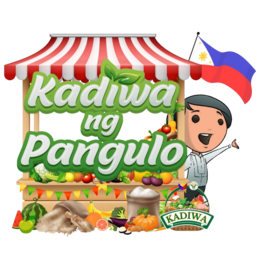
INM and IPM as integral components in diversified farming:
LOLA CILA’S INTEGRATED FARM
Gregorio D. Daga, Jr. is a 30-year-old agripreneur from Palo, Leyte. He graduated from the Visayas State University (VSU) with a degree in Agriculture. Being an agriculture graduate exposed him to different kinds of farming systems, which made him even more interested in integrated farming. He believed that integrated farming outweighs the advantages, risks, and potentials in mono cropping.
Sparking interests, promoting advocacies
After graduating in 2016, Daga was hired by VSU’s Philippine Root Crop Research and Training Center (PhilRootCrops) as a Science Research Assistant for the Taro/Gabi Project. Duck production was incorporated as one of the pest management measures to control the infestation of the golden apple snail or kuhol. This made him deeply appreciate the symbiosis of the two commodities plus the planting of water spinach on the perimeter area. In 2017, he was transferred to the Cassava Project and was exposed to the intercropping of cassava, sweet potato, and corn in one area.
During his stay at PhilRootCrops, he was fortunate to be sent to the International Center for Tropical Agriculture (CIAT) in Vietnam to undergo a 14-day research fellowship on cassava crop. He had the opportunity to go to the northern parts of Vietnam, where vegetables, cassava, and other root crops were planted. That exposure strengthened his resolve to engage in integrated farming in the near future if given the opportunity and the resources.
In 2019, he decided to resign from his job and underwent training to join the active force. He pursued the idea of having a separate unit in the army that will focus on agriculture-related interventions. But this was not realized due to age restrictions and the COVID-19 pandemic. But as an Agriculture graduate, he initiated vegetable gardening inside the camp together with his classmates to add to the food supply.
Presented with an opportunity
In 2021, he was about to apply for a stable job when a Facebook post regarding the Young Farmers Challenge Fund (YFCF) Program of the Department of Agriculture (DA) caught his attention. He worked on the business model canvas for his proposed “INM and IPM: An Integral Component in a Diversified Farming,” with focus on integrated nutrient management (INM) and integrated pest management (IPM). He was fortunately named one of the Provincial Level awardees.
Daga started the implementation of the project way ahead of the downloading of the grant from the DA. One difficulty he encountered was the clearing operations of the site. What he thought would last for just a few days turned out to be a task for two weeks, entailing more costs contrary to the budgeted amount. Cutting bamboo trees in the area also became his biggest expense during the clearing operations. However, this turned out to be a blessing as he did not spend even a peso for bamboo poles for the construction of the vermicomposting shed, the housing for his free-range chicken, and the fencing of the area.
Another struggle he faced was the excess water from the nearby area during the rainy season. Some parts of his farm were submerged and were prone to flooding. The only solution he had in mind was to make a catch basin and drainage canal. It is another unforeseen expense for him but also another opportunity, as this will become the area for his mallard duck production and, hopefully, tilapia production in the future.
YFCF as his saving grace
Fortunately for Daga, he received another blessing as he became one of the ten Regional Level finalists, representing the Eastern Visayas Region. With the initial implementation and progress that he made, the panel of judges saw the potential in him and his enterprise. This secured his much needed source of additional funds.
Since these funds were still in process, an immediate fund was needed for the operation of the farm. Daga’s pechay production saved the call after generating a total amount of Php 15,210.00 from selling 507 bundles of pechay, which he priced at Php 30 per bundle. This was a manifestation that his enterprise was already generating income and, if fully and properly managed, can help attain his goal of a self-sufficient and sustainable integrated farm. These blessings were indeed timely as this makes his enterprise operational and ready for the next cycle of pechay production.
Likewise, the additional financial grant of Php 150,000 will be used for the expansion of three priority commodities: vermicomposting, pechay production, and free-range native chicken production. This will help him also in generating jobs for the community. Mallard duck egg production and swine production, including piglets and fattening, will also form part of his future plans because he knows that His bounty and blessings do not end with this competition.
Daga promised himself to continue pursuing this endeavor. He is hopeful that with his continued efforts and His guidance, what started as a dream will end up with more blessings and even more bountiful agricultural products. ###

